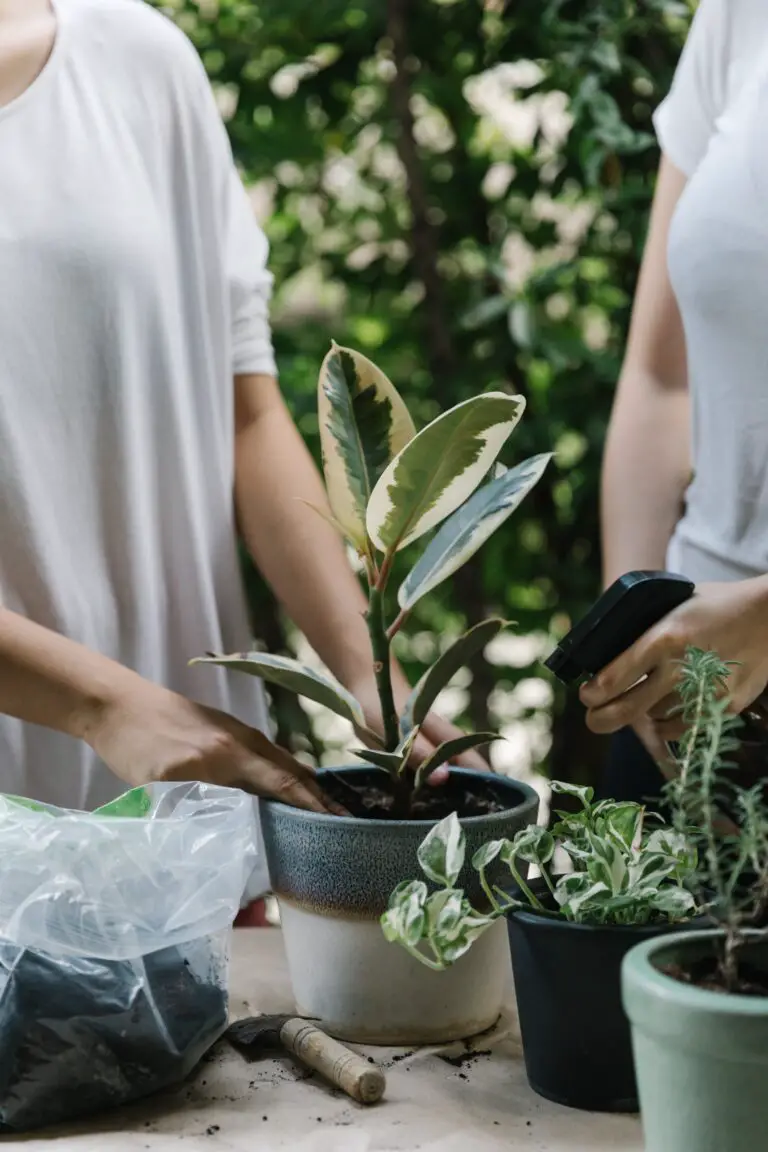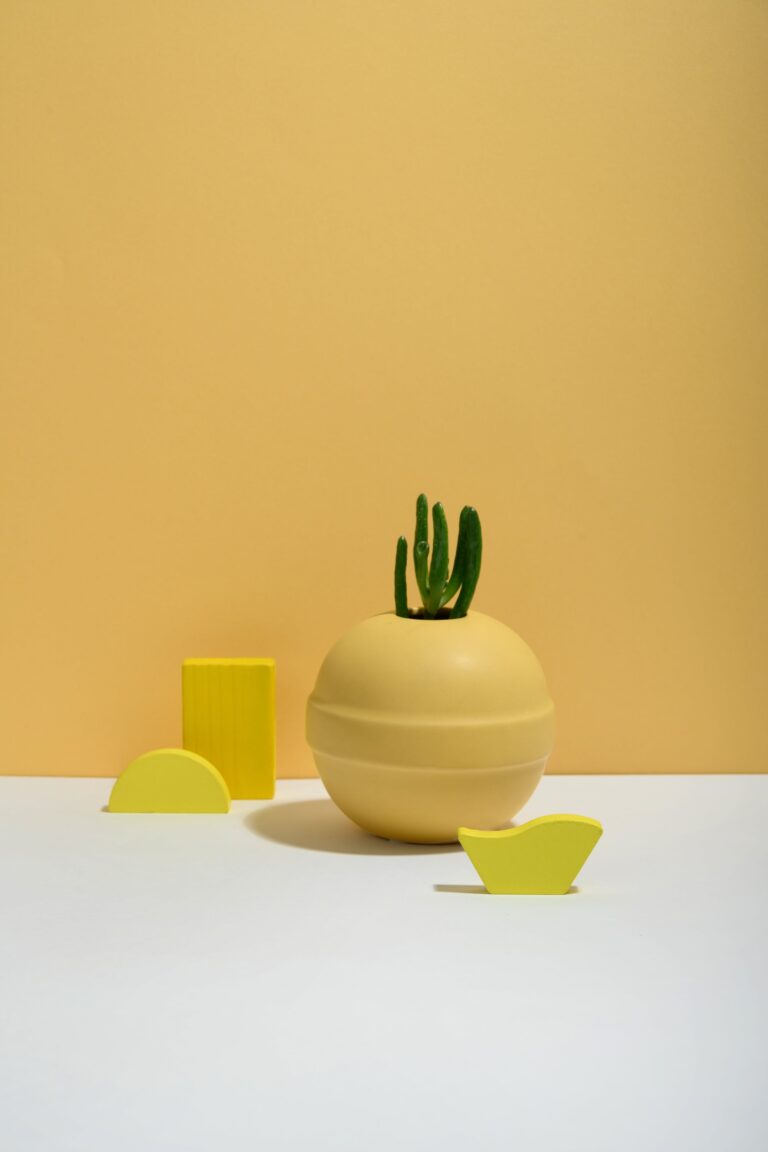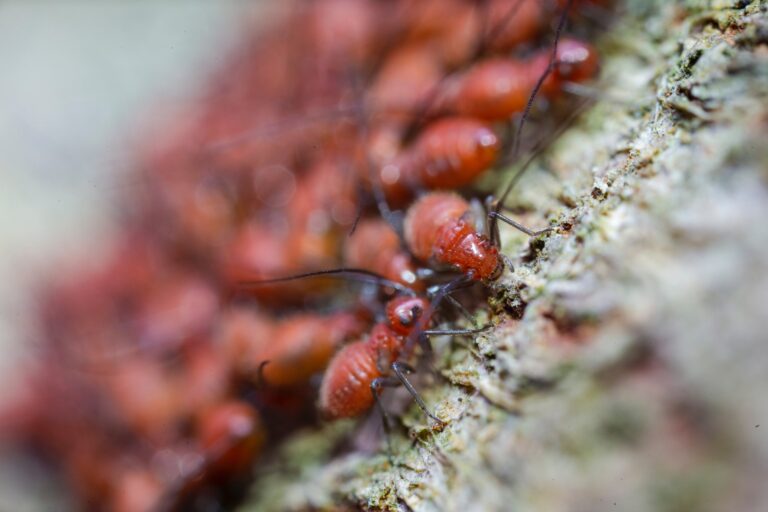Introduction to Crassula Care
Welcome to the captivating world of Crassula plants, where every gardener, seasoned or novice, can find joy in nurturing these resilient yet graceful succulents. Crassulas are a testament to the beauty and diversity of nature’s creations, offering a soothing presence for any indoor or outdoor space. But fear not, taking care of a Crassula is as rewarding as it is straightforward, and we’re here to unravel the mystery of keeping your green companion flourishing.

Nestled comfortably between the hearty cacti and their delicate flower cousins, Crassula occupy a unique niche in the plant kingdom. Picture this: you’re sitting in your living room, basking in the tranquility that only a well-cared-for Crassula can provide. It starts with understanding the ideal conditions — a dance of light, water, and nutrients that, when perfectly balanced, sparks a green spectacle in the corner of your abode.
If you’re eager to dive deeper into the succulent universe, exploring different Crassula varieties can be an enriching expansion to your botanical journey. From the classic Jade Plant to the mixed hues of a Rainbow Crassula, each species offers its own slice of magic to an enthusiast’s collection.
Click here to embrace the myriad of shapes, textures, and colors encompassing the Crassula species, a perfect starting point for any budding green thumb. So, let’s embark on this verdant venture together, nurturing your Crassula to become a living testament to your care and dedication.
Ideal Growing Conditions for Crassula
Let’s talk about transforming your Crassula into the belle of the ball – it doesn’t take magic, just a little plant know-how! Picture this: you’ve got a Crassula that’s greener than the lush fields of Ireland and sturdier than a century-old oak. It’s all about dialing in those ideal growing conditions, so buckle up, and let’s get that thumb greener!
The Perfect Spot: Basking in the Light
First up, light – your Crassula craves it like a sunbather on a beach. A south-facing window is the golden ticket, but not too close, my friend. Think of it like a cozy suntan, not a blistering sunburn. If your house is more of a dimly-lit cavern, no worries! Just grab a grow light, and it’s ‘shine on, you crazy Crassula’.
Keep It Cool or Cozy? Crassula Temperature Talk
Next on the docket is temperature. Your plucky plant isn’t a fan of extremes – it prefers a chill, mild vibe. Imagine your Crassula lounging in a climate that’s more autumn in New England than summer in the Sahara. Keep it away from drafty windows in the winter and scorching sun in the summer, and you’ll have a content Crassula on your hands.
Your Crassula’s Enviro Essentials
As for the environment, Crassula plants are hardy souls that don’t demand the humidity of a tropical rainforest. In fact, they love the same kind of atmosphere you do – not too dry, not too humid. Just like Goldilocks, it’s all about finding that ‘just right’ sweet spot. But hey, if your home’s drier than a desert, consider a pebble tray with water or a subtle humidifier to add a touch of moisture.
For those who’ve stumbled upon the marvels of succulent care, you know it’s all about the details (discover the intricacies of nurturing these beauties). And for the ever-curious, remember that a thriving plant is a symphony of the perfect light, temperature, and environment. Nail these, and you’re not just growing a Crassula – you’re curating a piece of living art!
Watering Your Crassula the Right Way
Imagine a lone wanderer in the vast, arid desert, each rare rainfall a lifeline. Much like this resilient adventurer, your Crassula, with its succulent leaves, thrives on a drink that’s infrequent, yet substantial. It’s here, in the watering can, that we hold the power to mirror the desert’s ebb and flow, ensuring our Crassula doesn’t drown in love or wither from neglect. So, let’s delve into a watering routine that’s as fine-tuned as nature’s own rhythms, shall we?
First, get to know your Crassula’s unique thirst. Consider your home’s climate: a parched air-conditioned apartment versus a humid greenhouse begs for different watering scripts. Our aim is not to follow a strict schedule, but rather to listen to the whispers of our Crassula leaves. Let’s be attentive gardeners, marking the calendar only as a rough guide, keeping our senses sharp for the telling signs—a slight wrinkle of the leaf, a lighter pot signifying dry soil.

Here’s where we make a splash—but not too much! When the moment is ripe, and the soil feels dry an inch below the surface, it’s time to water generously, allowing the liquid life to permeate deeply, reaching the depths where roots eagerly wait. Embrace the ‘soak and dry’ method, drenching the soil completely, then patiently waiting for it to dry out before the next rainfall from your watering can. Remember, Crassula plants are not fond of ‘wet feet,’ so ensure any excess can escape through proper drainage. This is how we mimic nature’s watering wisdom, skillfully balancing between drought and flood—a true art in plant care.
And when life gets busy and the days blend into one another, it’s all too easy to slip into automatic habits—watering just because it’s Saturday, or skipping a week out of forgetfulness. No judgment here, but let’s get better. Let’s be the guardians of our Crassula’s delicate balance, tuning into its needs with attentiveness, not just routine. After all, what we’re nurturing here isn’t just a plant—it’s a living piece of desert charm, a silent companion that deserves our mindful care.
So there you have it, a primer on quenching your Crassula’s thirst the right way. Practiced hands soon learn the dance, and it’s one that brings about a Crassula that’s robust, radiant, and reaching for the sun. Water wisely, my friends, and watch as your Crassula thanks you in blossoms and growth, a testament to the power of your newfound watering savvy.
The Perfect Soil Mix for Crassula
Think of soil as the foundation of your home – you need it strong, reliable, and well-composed. Your Crassula, with its plump leaves and sturdy demeanor, demands nothing less than the ideal cradle for its intricate root system. So, let’s dig in and create the perfect soil mix that ensures your Crassula not only survives but thrives with vigor!
First things first: soil composition is the cornerstone of succulent care. Imagine a blend that’s too dense or too clingy – that’s a recipe for waterlogged roots and a distressed Crassula. Instead, what you want is a mix that strikes a harmonious balance between retaining just enough water and allowing excess moisture to escape effortlessly.
Let’s break it down – the bulk of your mix should be a good quality potting soil that’s rich in nutrients, but here’s the key: you need to amend it. Add in a generous helping of coarse sand, perlite, or even pumice if you’re feeling fancy. These gritty friends are the heroes that provide the aeration and drainage your Crassula yearns for. Imagine these granules creating tiny air pockets in the soil, whispering to the roots, “Breathe easy, buddy, we’ve got you covered.”
Now, onto the pH levels, think of it as the personality of your soil – it determines how sociable it is with the nutrients around it. Crassula plants revel in a slightly acidic to neutral soil environment, so aim for a pH that lingers between 6.0 and 7.0. Just like a well-balanced diet keeps you chipper, the right pH keeps your Crassula’s nutritional uptake on point.
Have you ever wondered about the role of good care tips in bolstering the growth of your precious succulent? It’s all about ensuring the soil mix is spot on. You want a medium that mimics the natural, rocky terrain Crassula species are adept at conquering. So think gritty, think drainage, and watch your Crassula stand tall, mocking any excess water that dares linger at its roots.
Remember, caring for your Crassula is a journey of learning and loving the process. The right soil mix is just the beginning. Unleash your inner alchemist, blend the magical elements of the perfect substrate, and let your Crassula revel in the joy of its ideal home. So roll up your sleeves because it’s time to get mixing – your Crassula is counting on you!
Feeding Your Crassula: Fertilization Know-How
Just like you enjoy a hearty meal, your Crassula—whether it’s the robust Jade plant or the delicate ‘String of Buttons’—craves the right kind of nutrition to flourish. If you’re picturing your green friend bulking up with a solid fertilizer regimen, you’re on the right track!
Fertilizing your Crassula isn’t rocket science, but it does require a little know-how. You don’t just throw any old food at it; no, it’s about choosing the right types of fertilizer. Think about it like crafting that perfect smoothie—you want it packed with nutrients, not just filler. A balanced half-strength, water-soluble fertilizer works wonders, serving up a cocktail of nutrients that’ll have your Crassula saying, “Cheers!”
Now, let’s talk timing. You wouldn’t have a feast right before running a marathon, right? Similarly, your Crassula has its own seasons of growth, mainly in the spring and summer, when it’s eager to soak up those nutrients. That’s when you bring out your fertilizer mix and get to work, but remember—moderation is key. A monthly date with the fertilizer bottle during these growth spurts is plenty.
Applying fertilizer might sound daunting, but it’s as easy as pouring a glass of water. Well, almost. You want to water your plant first with plain ol’ H2O to moisten the soil. This step is like laying down a welcome mat for the nutrients to enter. Then, follow up with your fertilizer solution, and voilà! You’ve just treated your plant to a gourmet meal.
For those of you who are visual learners and want to see this process in action, check out this video where an enthusiast shows you the step-by-step process to ensure your Crassula thrives. There’s nothing quite like watching a fellow plant lover get their hands dirty to make you feel at home in your gardening journey!
Don’t be dismayed if you find your Crassula looking a bit lackluster outside of growing seasons; it’s not always a cry for more food. In the cooler, quieter months of fall and winter, your leafy companion prefers to fast, focusing on rest and conservation rather than growth. Just as you might opt for a light snack over a full meal at times, your Crassula is quite happy with its existing nutrient stores until the growing season returns.
Remember, a little goes a long way in the world of Crassula care. By following these simple fertilization tips, you’re setting your succulent up for success. It’s not just about the survival of the fittest; it’s about the survival of the nurtured. Give your plant the TLC it deserves, and watch as it rewards you with its unwavering, leafy embrace.
Propagating Crassula Plants Successfully
Welcome to the world of Crassula propagation, where the promise of new life from a single leaf can blossom into an array of lush greenery! Dive into the basics with me, and before you know it, you’ll be a pro at expanding your Crassula collection.

First, select a healthy Crassula leaf or stem cutting. This isn’t a random pick; think of it as choosing an athlete for a relay race – you want the best to ensure success. Gently twist the leaf from the stem; a clean break is the ideal start for your propagating journey.
Next, the waiting game begins. Patience is key here. Let the cutting dry out for a couple of days until a callous forms over the cut area. Think of it as a protective scab that shields your future plant from any unwanted bacteria hitching a ride.
Rooting Your Crassula Cuttings like a Pro
With your cuttings calloused, it’s time to encourage those roots to emerge. Place them on top of a soil mix that drains faster than a sink with no stopper. Moisture is good; drowning, however, is bad news for your plant’s prospects. Lightly mist the soil but avoid making it soggier than a sponge in the ocean.
Place your expectant cuttings in a warm spot with loads of indirect sunlight – think of it as a beach holiday for your plant, minus the risk of a sunburn. With the right conditions, tiny roots will bravely venture out into the soil within a few weeks. It’s a plant’s version of dipping toes into the water.
Finally, the real magic happens when you pot your Crassula. Once the roots are about an inch long, nestle them into their new homes with the same level of care you’d use to tuck a child into bed. The next chapter in your Crassula’s life starts now – from a single fragment, a full-fledged succulent will grow, ready to conquer the windowsill!
Common Pests and Problems in Crassula Care
Just like any other succulent aficionado, you’ve probably brought a crassula into your home, expecting an easy-going, low-maintenance buddy. It’s usually true—these hardy plants can thrive with minimal fuss. But watch out! Even the resilient crassula can become the playground for pesky pests and problematic pathogens. Let’s shine a light on what to look out for and show these intruders the door.

Imagine this: You wake up one morning to find your prized crassula looking a little lackluster. Upon closer inspection, you spot something moving—tiny brown ants are trailing across the soil, and beneath the leaves, you’re horrified to discover the telltale webbing of spider mites. They’re tiny, but their impact is anything but trivial. These critters can quickly sap the life out of your plucky plant if not dealt with promptly.
Now, picture another scenario: Your crassula’s leaves once stood proud and perky, but now they’re falling faster than leaves in autumn. The culprit? Overwatering likely gave rise to root rot. It’s the silent killer of many houseplants, especially succulents that prefer their feet dry. They’re not thirsty teenagers after soccer practice; they’re desert dwellers who’ve mastered the art of drought dodging! A well-draining pot and restrained watering can will keep this ominous issue at bay.
Let’s not forget about mealybugs and aphids. These little white fluffs and green goblins can turn your crassula into their all-you-can-eat buffet if left unchecked. They’ll latch on and drain the vital juices like plant vampires. Watching your crassula under siege like this can be heart-wrenching for any plant parent. Thankfully, a keen eye and a swift treatment plan involving neem oil or insecticidal soap can show these freeloaders the exit.
Consider these real-life examples as a guide: Be vigilant, be prepared, and don’t be afraid to roll up your sleeves to defend your green companion. Knowing the signs of trouble and the appropriate counterattack will ensure your crassula remains the healthy, happy centerpiece of your plant collection. Don’t let these common pests and problems outmaneuver you!
Winter Care Tips for Your Crassula
When winter whispers its chilly tales, it’s not just us humans who feel the nips and tucks of the colder months—our leafy companions, like the resilient Crassula, demand some extra TLC. To navigate the frosty season successfully, let’s delve into the critical care strategies for the crassula plant, ensuring it emerges from winter’s embrace robust and vibrant.

Understanding Dormancy: The Crassula’s Winter Slumber
Did you know that your Crassula plant embraces a dormancy phase during winter? Like a bear hibernating, your Crassula slows down, conserving energy for the warmer months ahead. It’s a natural cycle, and your understanding of this period is fundamental to providing the best care. Monitor your plant’s watering needs closely—overwatering is the nemesis of a dormant Crassula. Wait for the soil to dry out before offering a drink to your quiet companion, mirroring the sparse rainfall of its native lands.
Temperature and Light: The Crassula’s Winter Wishlist
In their natural habitat, Crassulas endure cool nights, so keeping your home between 50-55°F (10-13°C) during winter nights can mimic this environment well. During the day, a bright spot with indirect sunlight will remind your Crassula of the fleeting winter sun. A regular routine of sunbathing by a frost-kissed window can do wonders!
Safeguarding from the Cold: Winter Armor for Your Crassula
Winter drafts and heaters can both be foes of your Crassula’s well-being. Position your plant away from drafty windows and excessive heat sources that can dehydrate and stress it. Remember, your green friend’s succulent leaves are like little water reservoirs; they prefer a stable environment where they aren’t subjected to extreme changes.
Feeding Finesse: Nutrition During the Nippy Season
With your Crassula dozing off in the colder months, it’s not the time for feasts. In fact, fertilizing during this period could do more harm than good. The plant’s metabolism is dialed down, so let’s skip the fertilizer and focus on providing a stable and comfortable habitat. When spring peeks around the corner, you can resume feeding your awakened plant buddy with a balanced succulent fertilizer to kickstart its growth cycle.
Real-Life Resilience: Crassula’s Triumph over Winter
Take it from seasoned plant enthusiasts; winter doesn’t have to be a dreary spell for your Crassula. With a touch of vigilance and these winter care tips, I’ve witnessed many a plant parent cheer as their Crassula marches triumphantly into spring. Just remember to adjust your care routine to your home’s specific conditions, and your Crassula’s perseverance through winter will be a testament to your attentive care.
Crassula Pruning Techniques
Imagine you’ve just hosted a dinner party, and your Crassula was the center of attention, with its lush foliage and sturdy structure complementing your home’s aesthetics seamlessly. That’s the power of a well-pruned Crassula! Pruning isn’t just about keeping your plant in shape; it’s a vital part of nurturing your succulent companion. Let’s dig into how you can master this art with ease.
First things first, timing is everything. The best time to prune your Crassula is in the spring, just before the active growing season kicks in. This way, your plant has the entire summer to showcase its rejuvenated form. But what if your Crassula’s leaves start mimicking a wild hedge, growing every which way? Worry not! You’ll have to channel your inner Edward Scissorhands and selectively trim those wild leaves to maintain a dense, tree-like appearance.
Keep in mind that pruning isn’t just about aesthetics; it’s also about the health of your plant. Removing dead or damaged leaves allows for better airflow and can prevent potential pests and diseases. Always use sharp, clean scissors or pruning shears—think of them as your surgeon’s tools—because accuracy and cleanliness matter.
Here comes the fun part: shaping. Want your Crassula to look like a miniature tree? Trim the lower leaves and shape the upper canopy. For a bushier look, pinch off the tips. Each cut you make is a message to your plant — “grow here, not there!” And just like training a bonsai, your patience and careful snipping will yield a living sculpture that’s sure to impress.
Don’t forget to let your Crassula heal after pruning. Just like us, your plant needs time to recuperate from its little ‘operation.’ Give it a spot with adequate sunlight and resist the urge to overwater. Before you know it, new growth will sprout, and your Crassula will be ready for another round of show-and-tell at your next gathering.
Remember, pruning isn’t just about today; it’s about envisioning tomorrow’s growth. With each snip, you’re guiding your Crassula towards its ideal form. Imagine leaning back in your favorite chair months from now, admiring the result of your handiwork—a thriving, perfectly-shaped Crassula that’s as much a reflection of your care as it is of nature’s beauty. Happy pruning!
Repotting Your Crassula: A Step-by-Step Guide
There comes a moment in every caregiver’s journey where it’s time to upgrade your Crassula’s home—a pot that offers more space and nutrients for its ever-expanding roots. But why, when, and how should you navigate this transition to keep your green companion thriving? Let’s get into the dirt of it!
Why Repot? It’s simple—growth. Imagine wearing a pair of shoes two sizes too small. Uncomfortable, right? That’s your Crassula’s roots without adequate space. Repotting encourages continued growth and prevents the dreaded root-bound scenario. Plus, fresh soil replenishes essential nutrients, ensuring your plant remains as perky as a morning yoga enthusiast.
Knowing When to Expanding Horizons
Timing is as crucial in repotting as it is in baking a cake. Your Crassula will often tell you when it’s time. Look for roots peeking through drainage holes or a plant that dries out faster than a comedian on stage. Another tell-tale sign is slowed growth. Once these signals appear, it’s time to wield your gardening gloves and get to work!
The How: A Step-by-Successful-Step Approach
Firstly, consider seasonality. Spring, the season of rebirth and growth, is ideal for repotting as your Crassula is already in a state of natural flux. Begin by gently removing your plant from its current container. It’s like introducing a timid cat to a new house – extra care is imperative.
Choose a new pot that’s one size larger than the current one, ensuring it has ample drainage. Layer the bottom with gravel for an excellent drainage foundation, then follow with a mixture of potting soil designed for succulents. Remember, Crassula plants, like a cat with a favorite nap spot, prefer soil specific to their needs.
Position your Crassula in its new abode and fill the gaps with soil, keeping the root crown just above soil level. Now, give it a good drink of water. Think of it as a housewarming gift, settling the soil and easing the transition.
Remember Martha from down the street? She repotted her Crassula, and within months it was flourishing like the gardens of Babylon. The key? Martha followed these steps and understood that a little TLC goes a long way.
Now, for a visual guide, let’s watch how an expert tackles the repotting process. This will give you a clearer picture and ensure your Crassula gets the premium treatment it truly deserves.
There you have it—a lush, rejuvenated Crassula ready to continue its journey with you. It’s not just about repotting; it’s about giving your plant a new lease on life, and who wouldn’t want that for their leafy friend?
Frequently Asked Questions
Embarking on the delightful journey of nurturing a Crassula, you’ll find yourself brimming with questions. How often should I water it? Does it need special soil? Fret not, for we’ve compiled the insights you crave—straight from the experiences of fellow Crassula caretakers!
What’s the ideal watering schedule for my Crassula?
Picture this: It’s a lazy Sunday afternoon, and you’re sipping on iced tea when you remember your Crassula. Here’s your rule of thumb—stretch out that sip, because these succulents prefer a drought over a flood! Water deeply, but only when the soil is bone dry. Channeling your inner desert might just be the key to a perky plant pal.
Should I be worried about the lighting?
Affirmative! Your Crassula is a sun-seeker, basking in bright, indirect light like it’s on a beach vacay. Sidle it next to a window where the soft morning or late afternoon sun kisses its leaves, avoiding the harsh midday rays. Think of it as natural sunscreen for your green buddy!
Does my Crassula need specific soil or fertilizer?
Envision your Crassula with toes wiggling in the sand—well, almost. A blend of potting mix with added perlite or sand ensures good drainage, so its roots don’t soak. When it comes to feasting, a balanced, water-soluble fertilizer is like a gourmet meal, served sparingly—at the onset of the growing season.
How should I handle pests and diseases?
If your Crassula starts looking a bit off, brace yourself—you might have uninvited guests! Mealybugs and spider mites adore your plant as much as you do. An alcohol-soaked cotton swab is your weapon of choice, Banishing these beasts with the precision of a fearless knight!
Remember, keeping your Crassula thriving isn’t a mystery wrapped in an enigma. It’s about tuning in to your plant’s needs and reacting with a caring touch. Armed with these kernels of wisdom, you’re well on your way to becoming a bona fide Crassula whisperer.




